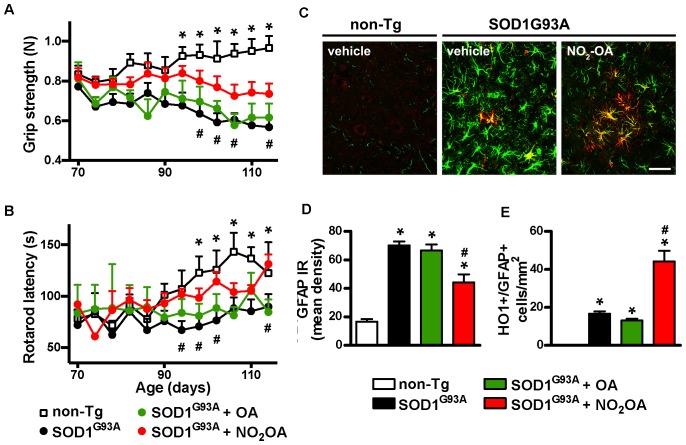FIGURE 5.
Effects of NO2-OA on clinical symptoms and inflammatory markers. Hind limb grip strength (A) and rotarod latency (B) records from non-Tg or SOD1G93A mice treated with vehicle, OA or NO2-OA were obtained. Each data point is the mean ± SEM from 7 to 17 animals per group as indicated in section “Materials and Methods.” ∗p < 0.05, OA and PEG-treated SOD1G93A compared to non-Tg mice; #p < 0.05 NO2-OA compared to vehicle or OA-treated SOD1G93A mice. GFAP (green) and HO-1 (red) immunoreactivity in the anterior horn of the spinal cords from non-Tg or SOD1G93A transgenic mice were determined; merged images are shown; HO-1/GFAP double-labeled astrocyte-like cells are observed in yellow; scale bar = 50 μm. (C) NO2-OA treatment reduces GFAP immunoreactivity (D), and increases the number of HO-1/GFAP immunoreactive astrocytes (E) in the ventral horn of the lumbar spinal cord of SOD1G93A mice compared with vehicle or OA-treated animals. Each bar represents the mean ± SEM from at least three animals per group. ∗p < 0.05 compared to non-Tg mice; #p < 0.05 compared to vehicle or OA- SOD1G93A -treated mice.

